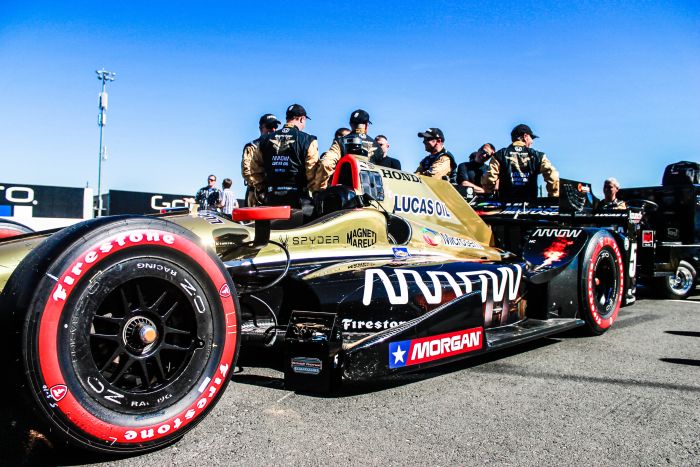
If you’re new to motorsports, you might believe that IndyCar and Formula 1 are comparable, but in fact, they couldn’t be more dissimilar. There are pronounced distinctions between the two categories in everything from the rules and the vehicles to the calendar and the tracks.
Due to the fact that both IndyCars and F1 cars are single-seat, open-wheel vehicles, they appear to be very comparable on paper.
They are both extremely fast and drive on regular race courses or street circuits. However, it is where the parallels between F1 and IndyCar end.
So, what is the main difference between IndyCar and F1 cars? The main differences between F1 and IndyCar are the type of racing cars they use and the circuits and tracks where they race. IndyCar mostly races on oval circuits, while F1 races are mostly held on mixed circuits and their cars are fast on straight lines.
Table of Contents
What Are The Differences Between F1 and IndyCar Vehicles?
Because F1’s technical requirements are much more flexible than IndyCar’s, there is room for creativity and invention, as evidenced by Mercedes’ nearly “sidepod-less” 2022 car. However, in IndyCar, every participant has the same car type due to aerodynamic constraints.
If you want to know Why Are F1 Cars Getting Bigger? (WHAT YOU DIDN’T KNOW), click here.
Honda and Chevrolet are the only two engine manufacturers for the entire IndyCar field of 27 cars, whereas Ferrari, Mercedes, Red Bull, and Renault are the four engine manufacturers for the 10 teams in the Formula One Championship. IndyCar only has two engine manufacturers, but F1 currently has four engine manufacturers.
Unlike Formula One, which has used a V6 turbo-hybrid engine since 2014, IndyCar currently uses a V6 twin-turbo engine but plans to adopt hybrid technology beginning in 2024.
What Are the Primary Distinctions Between F1 and IndyCar?
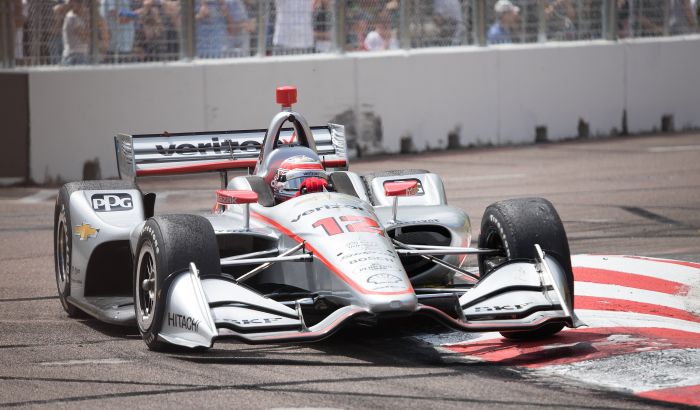
For anyone looking at these moto racing sports for the first time, it may appear at first that these sports are similar or almost the same. This is not true, however, although the cars may appear like they have the same design but true to be told, even though they are pretty much different. Here are the top reasons that make the biggest differences between these two moto sports:
- Races
- Cars Design and Specifications
- Team
- Drivers
- Rules and Regulations
- Race Locations
- Race Circuits
Now that we have covered some of the biggest differences, let’s dive a little bit deeper.
Manufacturing
There are 2 established engine manufacturers in IndyCar (Honda and Chevrolet) and 1 chassis supplier (Dallara), so each team picks what it buys, which clearly makes it cheaper and allows us to have a number of vehicles with the exact same features on the track, however in Formula 1 each team must create its own cars, they are only permitted to get engines and transmission, the others are on their own so every car is unique.
If you want to know Why Do F1 Cars Have Sidepods? (INTERESTING FACTS!!!), click here.
Fuel
IndyCar has long used a blend of 85% ethanol and 15% gasoline, which speeds up combustion but has the drawback that the flame is undetectable in the event of a fire. In Formula 1, high–octane gasoline is utilized 99 percent of the time, with the remaining 1 percent being added to the team’s liking.
If you want to know What Are F1 Grid Penalties? (DETAILED EXPLANATION), click here.
One is the birthplace of automotive technology; in fact, Formula 1 has led to numerous advancements for the sector, whereas IndyCar strives to maintain a certain level of “purity” with the goal of simply outpacing competitors, even though the times have caught up with it and hybrid engines will be a part of its arsenal starting in 2021.
Nature
IndyCars are designed for consistent speeds like ovals, so once they move to circuits, their aerodynamics force them to decelerate sooner and tougher before cornering, and they have a tougher time accelerating.
If you want to know How Much Does an F1 Pit Crew Member Earn? (INTERESTING FACTS), click here.
In contrast, Formula 1 cars are created for mixed circuits, which means they are fast cars on the straight that speed up very easily and quickly.
Note: They can also take curves at faster speeds thanks to their aerodynamic efficiency. An F1 can accelerate from 0 to 200 in only 4 seconds, while an IndyCar needs double that time.
Engines
Since IndyCar employs 2.2–liter V6 biturbo engines with 550–750 horsepower, Formula 1 uses 1.6–liter V6 turbocharged hybrid engines with 800–1,000 horsepower, which is why they don’t accelerate as quickly but can get with a higher top speed.
If you want to know What Is the Top Speed of an F1 Car? (AMAZING!!!), click here.
Strategy
When it comes to aerodynamics, Formula 1 teams have to tailor their cars to each individual track, and during a race, they can only switch out tires.
In IndyCar, on the other hand, there are just 2 aerodynamic kits for road courses and one for ovals and drivers may switch between the two at any time.
Note: This encourages more innovative strategies and levels the playing field between teams. As if that weren’t enough, IndyCar uses the Push to Pass button, which temporarily adds up to 40 additional horsepower, to overtake competitors, while Formula 1 has the DRS system, which retracts the back wing.
Security
Formula 1 drivers wear a halo for protection around their heads, while IndyCar drivers wear a halo and an aero screen to keep them safe from flying debris.
If you want to know How Long Is a Formula One Season? (For The Fans), click here.
How Does the Racing Schedule of IndyCar and F1 Look Like?
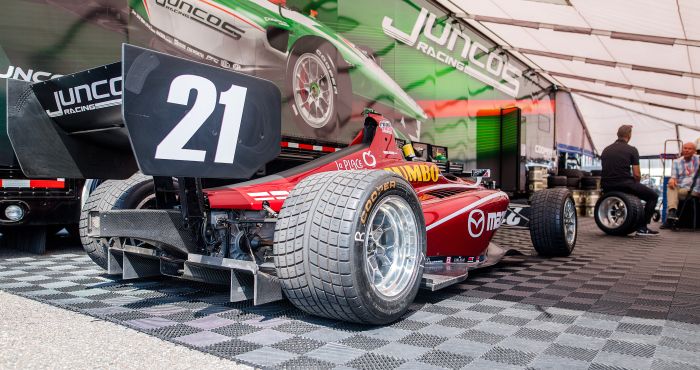
Unlike IndyCar, which holds all of its races in the United States with the exception of the race in Toronto, Canada, F1 is a global championship that travels to 5 continents over the course of 23 Grand Prix.
IndyCar has traveled to Brazil before, most recently in 2013, and has also visited Europe while competing in CART in the 1990s and 2000s.
If you want to know What Are The Best F1 Simulators? (ON THE MARKET), click here.
The 17 races are condensed together because the IndyCar season typically begins in late February and ends in early September.
The timetable for Formula One typically runs from March through the season-ending Abu Dhabi Grand Prix in November.
How Do IndyCar and F1 Circuits Look Like?
Oval racing is one of IndyCar’s main draws, but F1 has traditionally avoided doing so. Ovals, including the Indianapolis 500, make up about a quarter of the IndyCar program. The remaining races are held on a variety of street circuits and permanent road courses.
If you want to know How Many F1 Drivers Have Died? (CHRONOLOGICAL), click here.
The best American racetracks, including Road America, Laguna Seca, and Long Beach, are visited by IndyCar.
The majority of the F1 schedule includes street circuits like Monaco, Singapore, and Jeddah in addition to permanent racetracks like Silverstone, Spa-Francorchamps, Monza, and Suzuka.
Which Type of Automobile Is Faster, an Indy or an F1?
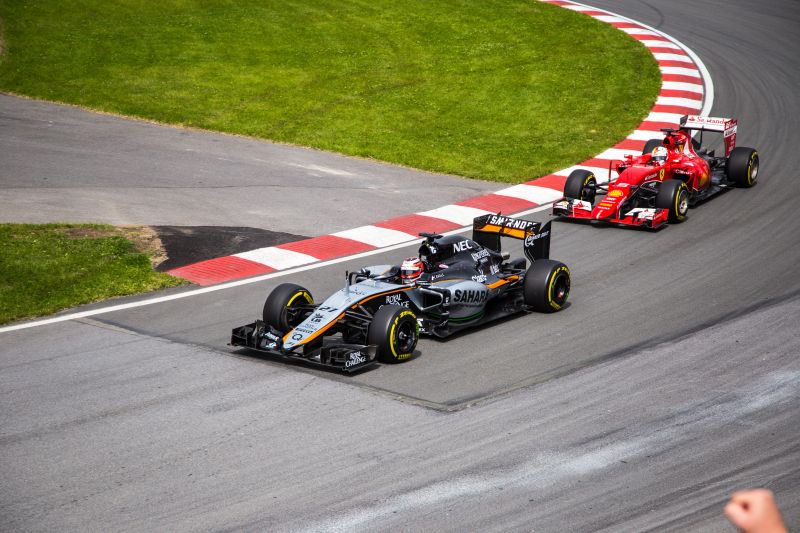
Due to the additional downforce an F1 car has, it can turn at a considerably higher pace than an Indy car, making it faster on permanent race circuits.
While F1‘s latest generation of cars has a maximum speed of 210 mph, Indy cars can achieve speeds of over 230 mph, making them faster on ovals.
If you want to know How Much Does a NASCAR Car Cost? (IN DETAIL), click here.
Fernando Alonso, a two-time Formula One World Champion, appreciates the difficulty of both sports, but he was particularly impressed with how quickly he was able to get up to speed and compete in IndyCar when he made his first appearance at the Indianapolis 500 in 2017.
Are There Any Differences Between IndyCar and F1 Fuel and Tires?
Pirelli has been the F1 tire supplier since 2011. The teams have access to three different compounds on race weekends, in addition to an intermediate and a wet tire.
Since 1996, Firestone has been a supplier to IndyCar, providing the two tire compounds known as reds (soft tires) and blacks for the road course competitions (hard tires). There is only one tire compound for ovals.
Refueling is available in the IndyCar series, although it has been absent from the Formula One championship since 2009. This results in longer pit stops and a significantly more complex strategy. Refueling is currently prohibited in F1 to conserve fuel, and pit stops there take about 2.5 seconds as opposed to 7-8 seconds in IndyCar.
Note: When the safety car comes out during an IndyCar race, the pit lane is blocked. This gives a significant advantage to a driver who has just pitted before a full course caution, which is the term used in the United States.
Unless otherwise specified, the pit lane is always open in Formula One, allowing drivers who stop during a safety car to gain time.
What Is the Difference Between DRS and Push to Pass?
Push to pass is an IndyCar feature that, when used, adds 60 horsepower to the vehicle. During a race, each driver is given 200 seconds of a push to pass time, which can be used whenever they want.
Push to pass is more equitable than DRS, F1’s overtaking aid equivalent, in some aspects and will be used by drivers to defend and attack.
If you want to know What is Formula 1 DRS? (THINGS YOU DIDN’T KNOW), click here.
At DRS detection locations located across a circuit, DRS can only be employed when a driver is less than one second behind the car in front.
This allows the driver in front to increase their straight-line speed so they can pass the car in front by opening up their rear wing in the DRS zone, which is typically at the longest straights on the course.
Which Drivers Are Better: F1 or IndyCar?
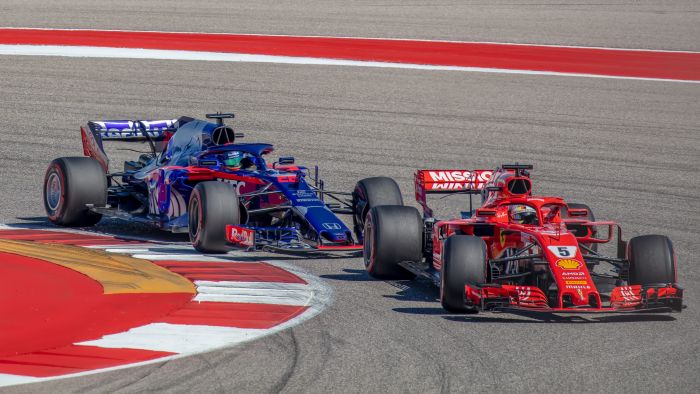
It is difficult to compare the driver lineups of Formula One with IndyCar, despite the fact that Formula One is widely regarded as having the finest drivers in the world, at least at the front of the field. IndyCar has a more diverse lineup of drivers.
However, a driver like Scott Dixon of Chip Ganassi has established himself over the past 20 years while never competing in Formula 1. Although they performed admirably in their IndyCar appearances, Alonso and Grosjean were unable to claim an early victory or secure pole position.
Note: Both series are home to some of the best drivers in the world, and while some F1 drivers, like Max Verstappen of Red Bull, have stated that they wouldn’t compete in oval races in IndyCar, both series are packed with stars.
At the age of 18, Colton Herta holds the record for being the youngest driver to win an IndyCar race.
FAQ: Riders Also Ask
Would A F1 Car Win The Indianapolis 500?
If matched against other Indy cars, an F1 car would not prevail in the Indy 500. Because Indy cars have less drag and can go up to 230 mph on ovals, they are faster on classic racetracks where F1 cars can travel faster due to stronger downforce.
Although F1 used to compete at the Indianapolis Motor Speedway on a road course configuration and even during the inaugural Indy 500, the 2005 event was marred by controversy because only 6 cars finished the race. F1 has not held a race at the location since 2007 due to the way the tires interacted with the track’s surface and configuration.
Conclusion
These two racing sports are extremely interesting to watch, and every time I watch the race, I get that kind of adrenalin rush and I imagine myself being in the riding position. If you are new to sports, you will most definitely enjoy the races. If you have been watching the races for some time, I think there is no need to say a thing, since you know everything I was previously talking about.
